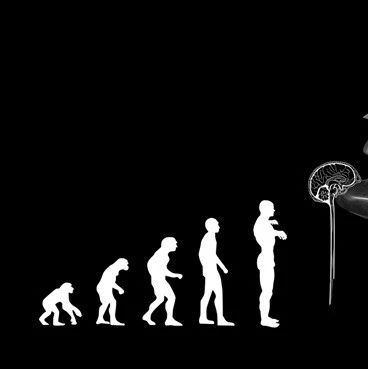导读:据报道,一项新研究对阿尔茨海默疾病与大脑发育的遗传组分进行了深入了解,该研究是由8个国家71所研究机构80多个科学家共同完成的。3篇相关的研究论文发表在4月15日出版的Nature Genetics上。

据报道,已经有一项研究对阿尔茨海默疾病与大脑发育的遗传组分进行了深入了解,该研究是由8个国家71所研究机构80多个科学家共同完成的。在4月15日的Nature Genetics上发表了3篇相关的研究论文。
第一篇论文,以9000多人的遗传分析为基础,报道了4个基因的某些翻译可能加速一个涉及新记忆形成的大脑区域的皱缩。研究表明,名为海马的大脑区域,通常随着年龄增长而皱缩,但如果此过程加速,就可能增加对阿尔茨海默氏病的易损性。第二篇,鉴别了与颅内容积相关的2个基因,其中颅内容积是颅骨内的空间,被20岁左右充分发育的大脑所充满。DeCarli是衰老大脑神经影像领域的先驱,他最先开发利用定量显像技术定义健康大脑结构与功能的关系,并特征化与血管和阿尔茨海默(氏)痴呆相关的变化。
海马遗传变体的研究——在第一篇研究中,鉴定的基因变体不引起阿尔茨海默症,但它们可能剥夺一种抵抗疾病的"储备"海马,已知这能导致细胞破坏和脑关键位置巨大收缩。其结果是记忆和认知能力严重丧失。研究人员指出,如果具有其中一个变体的人患阿尔茨海默症,这种疾病将攻击已妥协的海马,因此将导致其在更年轻时形成比其他人更严重的疾病。还不清楚为什么衰老海马体积通常会减小。新研究表明,皱缩密切相关的基因与海马成熟、凋亡(程序性细胞死亡)相关,凋亡是一个连续的过程,通过它可移除现役中的衰老细胞。该研究提供了衰老、海马与记忆受特定基因影响的新证据,了解这些基因如何影响海马发育与衰老,不仅可能提供延迟老年记忆丧失的新工具,也可能减少诸如阿尔海茨默疾病一样的疾病的影响。
颅内体积遗传变体的研究——虽然第一篇研究处理的是大脑皱缩的遗传关联,第二篇研究的是影响颅内体积的关联,这是对充分发育大脑大小的直接测量。虽然大脑体积与颅内体积都具高度遗传性,这两种测量的基因影响可能不同。为了评估这两种测量的基因影响,第二篇论文的研究人员对8175位老人进行了颅内体积与大脑体积断层测量的全基因组相关研究。结果表明:与大脑体积没有关联,但有2个位点与颅内体积明显相关:rs4273712(6q22)和rs9915547(17q21)。因为遗传学家已熟知相同基因的其他功能,特定基因与颅内体积的联系可能帮助我们更好地了解通常情况下的大脑发育。

Common variants at 12q14 and 12q24 are associated with hippocampal volume
Joshua C Bis, Charles DeCarli, Albert Vernon Smith, Fedde van der Lijn, Fabrice Crivello, Myriam Fornage, Stephanie Debette, Joshua M Shulman, Helena Schmidt, Velandai Srikanth, Maaike Schuur, Lei Yu, Seung-Hoan Choi, Sigurdur Sigurdsson, Benjamin F J Verhaaren, Anita L DeStefano, Jean-Charles Lambert, Clifford R Jack Jr, Maksim Struchalin, Jim Stankovich, Carla A Ibrahim-Verbaas, Debra Fleischman, Alex Zijdenbos, Tom den Heijer, Bernard Mazoyer, et al.
Aging is associated with reductions in hippocampal volume that are accelerated by Alzheimer's disease and vascular risk factors. Our genome-wide association study (GWAS) of dementia-free persons (n = 9,232) identified 46 SNPs at four loci with P values of <4.0 × 10-7. In two additional samples (n = 2,318), associations were replicated at 12q14 within MSRB3-WIF1 (discovery and replication; rs17178006; P = 5.3 × 10-11) and at 12q24 near HRK-FBXW8 (rs7294919; P = 2.9 × 10-11). Remaining associations included one SNP at 2q24 within DPP4(rs6741949; P = 2.9 × 10-7) and nine SNPs at 9p33 within ASTN2(rs7852872; P = 1.0 × 10-7); along with the chromosome 12 associations, these loci were also associated with hippocampal volume (P < 0.05) in a third younger, more heterogeneous sample (n = 7,794). The SNP in ASTN2 also showed suggestive association with decline in cognition in a largely independent sample (n = 1,563). These associations implicate genes related to apoptosis (HRK), development (WIF1), oxidative stress (MSR3B), ubiquitination (FBXW8) and neuronal migration (ASTN2), as well as enzymes targeted by new diabetes medications (DPP4), indicating new genetic influences on hippocampal size and possibly the risk of cognitive decline and dementia.
文献链接:https://www.nature.com/ng/journal/vaop/ncurrent/full/ng.2237.html
Common variants at 6q22 and 17q21 are associated with intracranial volume
M Arfan Ikram, Myriam Fornage, Albert V Smith, Sudha Seshadri, Reinhold Schmidt, Stéphanie Debette, Henri A Vrooman, Sigurdur Sigurdsson, Stefan Ropele, H Rob Taal, Dennis O Mook-Kanamori, Laura H Coker, W T Longstreth Jr, Wiro J Niessen, Anita L DeStefano, Alexa Beiser, Alex P Zijdenbos, Maksim Struchalin, Clifford R Jack Jr, Fernando Rivadeneira, Andre G Uitterlinden,David S Knopman, Anna-Liisa Hartikainen, Craig E Pennell, Elisabeth Thiering et al.
During aging, intracranial volume remains unchanged and represents maximally attained brain size, while various interacting biological phenomena lead to brain volume loss. Consequently, intracranial volume and brain volume in late life reflect different genetic influences. Our genome-wide association study (GWAS) in 8,175 community-dwelling elderly persons did not reveal any associations at genome-wide significance (P < 5 × 10-8) for brain volume. In contrast, intracranial volume was significantly associated with two loci: rs4273712 (P = 3.4 × 10-11), a known height-associated locus on chromosome 6q22, and rs9915547 (P = 1.5 × 10-12), localized to the inversion on chromosome 17q21. We replicated the associations of these loci with intracranial volume in a separate sample of 1,752 elderly persons (P = 1.1 × 10-3 for 6q22 and 1.2 × 10-3 for 17q21). Furthermore, we also found suggestive associations of the 17q21 locus with head circumference in 10,768 children (mean age of 14.5 months). Our data identify two loci associated with head size, with the inversion at 17q21 also likely to be involved in attaining maximal brain size.
文献链接:https://www.nature.com/ng/journal/vaop/ncurrent/full/ng.2245.html
Identification of common variants associated with human hippocampal and intracranial volumes
Jason L Stein, Sarah E Medland, Alejandro Arias Vasquez, Derrek P Hibar, Rudy E Senstad,Anderson M Winkler, Roberto Toro, Katja Appel, Richard Bartecek, ?rjan Bergmann, Manon Bernard, Andrew A Brown, Dara M Cannon, M Mallar Chakravarty, Andrea Christoforou, Martin Domin, Oliver Grimm, Marisa Hollinshead, Avram J Holmes, Georg Homuth, Jouke-Jan Hottenga,Camilla Langan, Lorna M Lopez, Narelle K Hansell, Kristy S Hwang et al.
Identifying genetic variants influencing human brain structures may reveal new biological mechanisms underlying cognition and neuropsychiatric illness. The volume of the hippocampus is a biomarker of incipient Alzheimer's disease1, 2 and is reduced in schizophrenia3, major depression4 and mesial temporal lobe epilepsy5. Whereas many brain imaging phenotypes are highly heritable6, 7, identifying and replicating genetic influences has been difficult, as small effects and the high costs of magnetic resonance imaging (MRI) have led to underpowered studies. Here we report genome-wide association meta-analyses and replication for mean bilateral hippocampal, total brain and intracranial volumes from a large multinational consortium. The intergenic variant rs7294919 was associated with hippocampal volume (12q24.22; N = 21,151; P = 6.70 × 10-16) and the expression levels of the positional candidate gene TESC in brain tissue. Additionally, rs10784502, located within HMGA2, was associated with intracranial volume (12q14.3; N = 15,782; P = 1.12 × 10-12). We also identified a suggestive association with total brain volume at rs10494373 within DDR2 (1q23.3; N = 6,500; P = 5.81 × 10-7).
文献链接:https://www.nature.com/ng/journal/vaop/ncurrent/full/ng.2250.html










